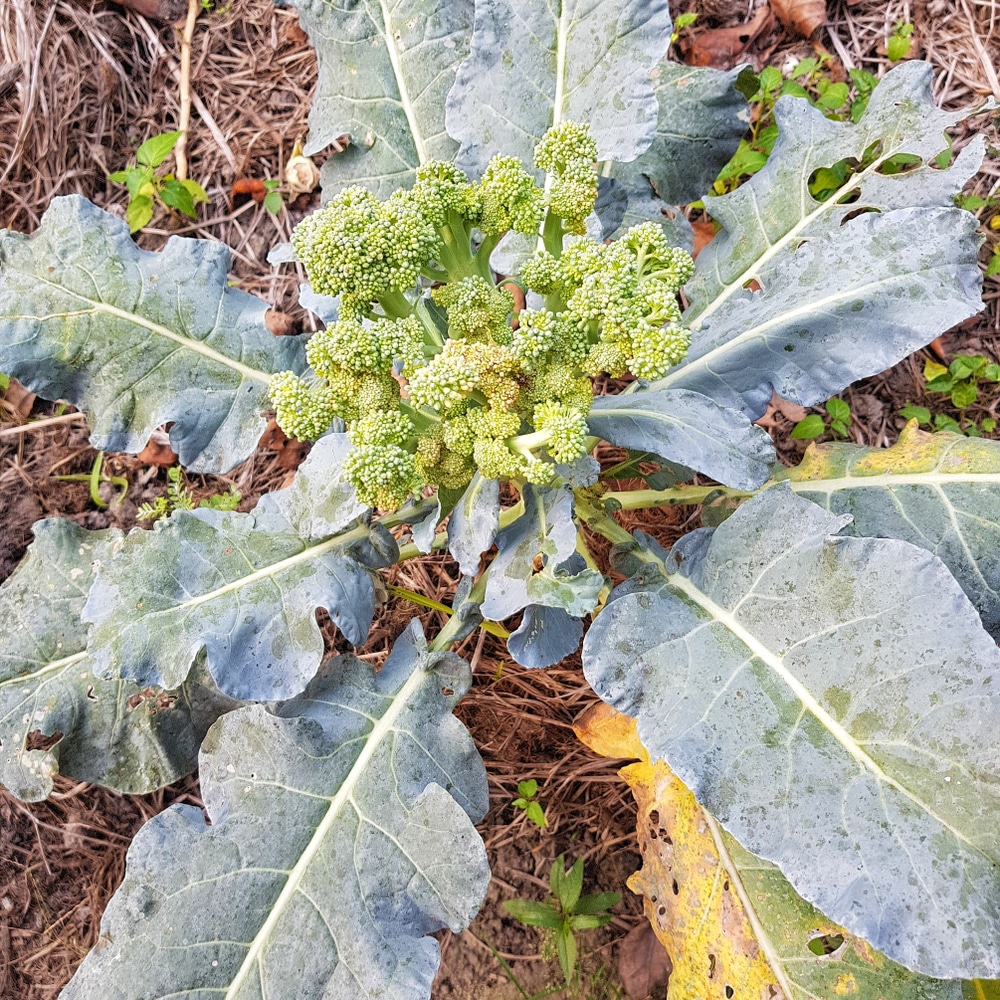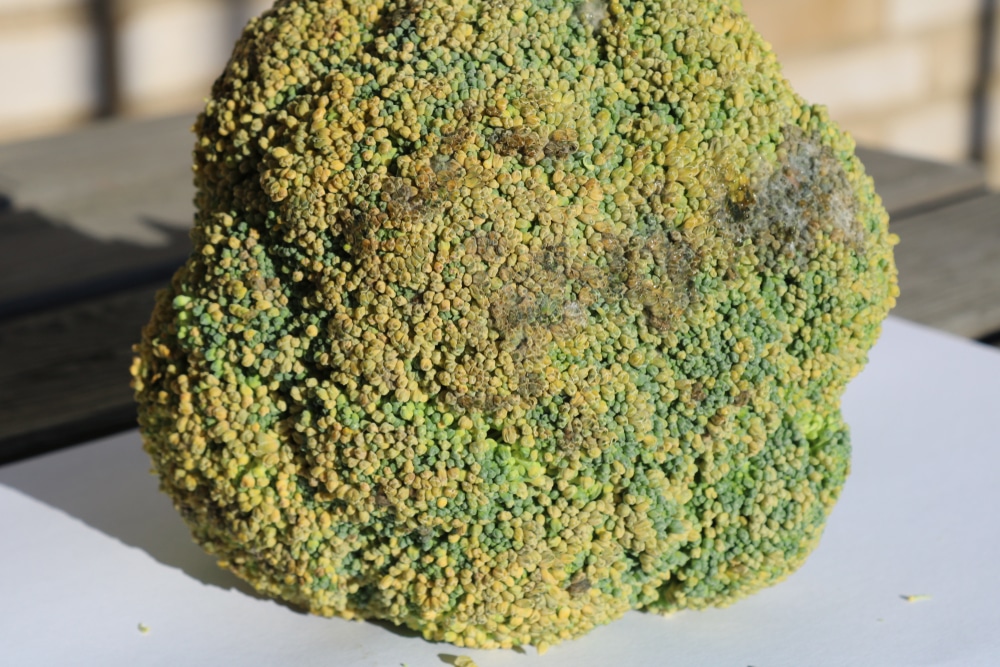You’ve been tending your broccoli patch, ensuring it gets the right amount of water and sunlight. The florets have been growing steadily larger each day, and you can’t wait to harvest them. But when you go out to check on your broccoli, you see that the tips of the florets or their heads have turned brown. What could have possibly gone wrong?
Healthy broccoli heads should be a deep green color with firm, tightly closed florets. Its stalk should be a rich green, and the broccoli should have no yellowing or brown spots.
There’s nothing more disappointing than finding that your broccoli plant has turned brown. Whether it be the head, stem, or leaves – brown broccoli is not something you want to see in your garden. Fortunately, there are numerous ways to help prevent or fix this problem.
Why Is My Broccoli Turning Brown?

Depending on the type of browning, there are different reasons why it may occur. Lack of nitrogen, brown bead or even diseases could be to blame. Let’s explore some of them by plant part and find out how to stop or even reverse the browning.
If the Head of Your Broccoli Is Turning Brown
Brown bead is the most common reason for browning broccoli heads. This condition is caused by a lack of nitrogen in the soil; sometimes, poor watering practices can be to blame. The lack of nitrogen stunts the growth of the broccoli, causing the florets to open prematurely and turn brown. Other external factors may also lead to brown bead, such as over-exposure to sunlight and extremely high temperatures.
How to Prevent Brown Bead
If your broccoli heads are turning brown due to brown bead or heat stress, there are a few things you can do to save them. Checking the soil’s nitrogen levels and making sure it’s properly fertilized can help.
If a soil test reveals a lack of nitrogen, feed your broccoli plants with a nitrogen-rich fertilizer. Because they’re heavy feeders, these plants will need to be fertilized before planting and throughout the growing season.
It’s also important to water your broccoli evenly. Check the soil and feel 1-2 inches below the surface – if it’s dry, water your broccoli. Underwatering is one of the main culprits of brown bead. Be more proactive and check the soil more often when the temperatures rise.
Alternatively, you may also choose a fast-maturing broccoli variety for the next season. These varieties mature earlier and are more resistant to brown bead caused by heat stress.
If your Broccoli Leaves are Turning Brown
Unlike broccoli heads, brown leaves are not caused by a lack of nitrogen. More often than not, it’s due to a fungal disease called Alternaria leaf spot. This disease can be easily distinguished by the small, dark brown spots that appear on the leaves. Your plants are more likely to experience this during wet and humid conditions, usually when it’s raining and the temperatures are warm.
Black spot and downy mildew are two other fungal diseases that can cause your broccoli leaves to turn brown. These diseases are often mistaken for one another because they produce similar symptoms. Black spot is characterized by small, dark spots on the upper side of the leaves, while downy mildew appears as white or grayish-white mold on the underside of the leaves. Both would eventually cause the whole leaf to turn brown. When not addressed immediately, this could spread to other plants and affect your whole garden.
How to Prevent Alternaria Leaf Spot, Black Spot, and Downy Mildew
The best way to prevent this disease is by practicing crop rotation. This will help reduce the chances of the fungus overwintering in the soil and infecting your plants next season. Make sure to rotate your broccoli with other plants in a different family, such as tomatoes, peppers, or cabbage.
You can also take measures to improve air circulation around your plants. This will help reduce the chances of the fungus spreading by splashing water droplets. Space your plants further apart and avoid overcrowding them in the garden bed. Consider staking your plants to improve air circulation even further.
Mulching your broccoli plants can also help prevent fungal diseases. This will create a barrier between the soil and the leaves, making it harder for the fungus to infect your plants. Use organic mulch like wood chips, straw, or even bark.
If the Stalk of Your Broccoli Is Turning Brown
The stalk is the part of the plant that connects the head to the root system. This part of the plant is usually green, but it can turn brown. Pests can cause the stalk to turn brown as they bore holes into it, weakening the plant and making it more susceptible to diseases.
However, if you’ve checked and there are no pests present, then it’s most likely boron deficiency. Boron is a micronutrient that’s essential for the proper development of plants. It helps with cell division, fruit, and seed development and strengthens the plant’s cell walls.
A boron deficiency will cause the broccoli stalk to turn brown or discolored, corky, and cracked. The leaves will also be small and distorted.
How to Fix Boron Deficiency in Broccoli
Boron deficiency is best addressed when it’s still in the early stages. The first thing you need to do is test your soil for boron levels. This will give you a better idea of how much boron your plants need.
You can feed your broccoli plants with a boron-containing fertilizer or boric acid. Ensure that you have a baseline and have confirmed that your soil lacks boron before applying any fertilizer. Once you have, apply small amounts and gradually add whenever needed. As a general rule in gardening, it’s easier to add smaller amounts than to remove excesses.
Take care not to overdo it, as this can lead to boron toxicity. Boron toxicity is more difficult to correct and can sometimes cause irreparable damage to your plants.
Broccoli Turning Brown: Final Thoughts
No matter what the reason may be, it’s important to take action if you see your broccoli plants turning brown. Prevention is always better than cure, so make sure to practice crop rotation and improve air circulation in your garden bed.
If you do suspect a boron deficiency, address it as soon as possible with a boron-containing fertilizer. Ensure plants are properly spaced and aim to provide the plant’s ideal growing conditions to help prevent browning or other problems.

